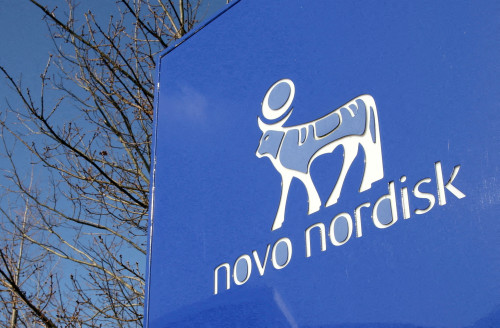By Bhanvi Satija
(Reuters) – U.S. retail investor fund flows into Novo Nordisk surged 32-fold on Friday, as the Danish drugmaker’s weaker-than-expected obesity drug data offered a rare dip-buying opportunity, according to Vanda Research.
Daily net flows climbed to $15.6 million from $0.49 million a day earlier, after eagerly anticipated data showed Novo’s experimental drug, CagriSema, helped patients cut 22.7% of their weight—short of the anticipated 25%.
Novo competes with U.S. rival Eli Lilly in the burgeoning market for weight-loss treatments, which is projected to exceed $150 billion in revenue within the next decade.
“Retail investors love to buy dips, especially in popular stocks..and do so, until that doesn’t work anymore,” said Marco Iachini, senior vice president of research at Vanda.
Shares of Novo Nordisk dropped 27% on Friday, erasing over $100 billion in market value. Its U.S.-listed shares tumbled 21% to $81.50, their lowest level since August 2023.
“Right now Novo only dipped below S&P 500 performance for the first time in 2 years so, probably too early to see them (retail investors) give up on their buy-the dip-bias,” he said. The retail flows on Friday likely provided an exit for institutional investors.
Funds from retail investors touched a one-day high of $23.5 million on March 7, data from Vanda shows, after Novo’s amycretin drug helped obese patients cut 13% of their weight in a study.
The success of Novo’s Wegovy and Lilly’s Zepbound weight-loss drugs has revived retail interest in the healthcare sector.
“With their GLP-1 product in the market and Eli Lilly being a lot on the news…a lot of retail investors know about Lilly,” said Sel Hardy, vice president of equity research at CFRA.
She suggested that a sell-off, like Lilly’s stock dip in October, and mid-November, could provide “an attractive entry point” for retail investors
Net retail flows into Lilly have outpaced Novo in the second half of 2024, according to Vanda.
For Lilly, net retail purchases peaked in August after its weight-loss drug sales surpassed $1 billion for the quarter, prompting a $3 billion forecast increase.
However, retail activity in these stocks lags behind tech giants such as Nvidia and Tesla, where activity often reaches the high teens.
(Reporting by Bhanvi Satija in Bengaluru; Editing by Tasim Zahid)




